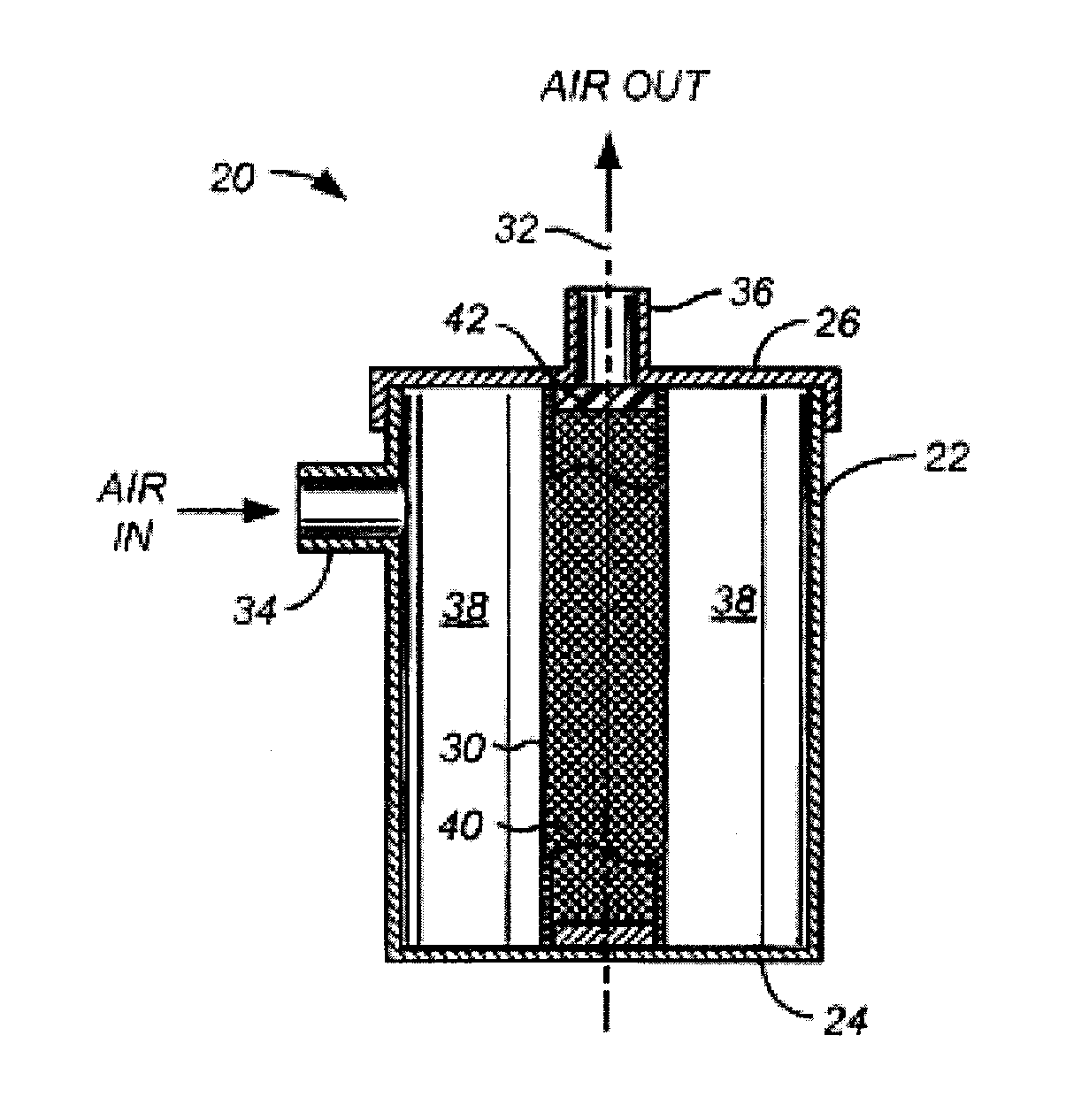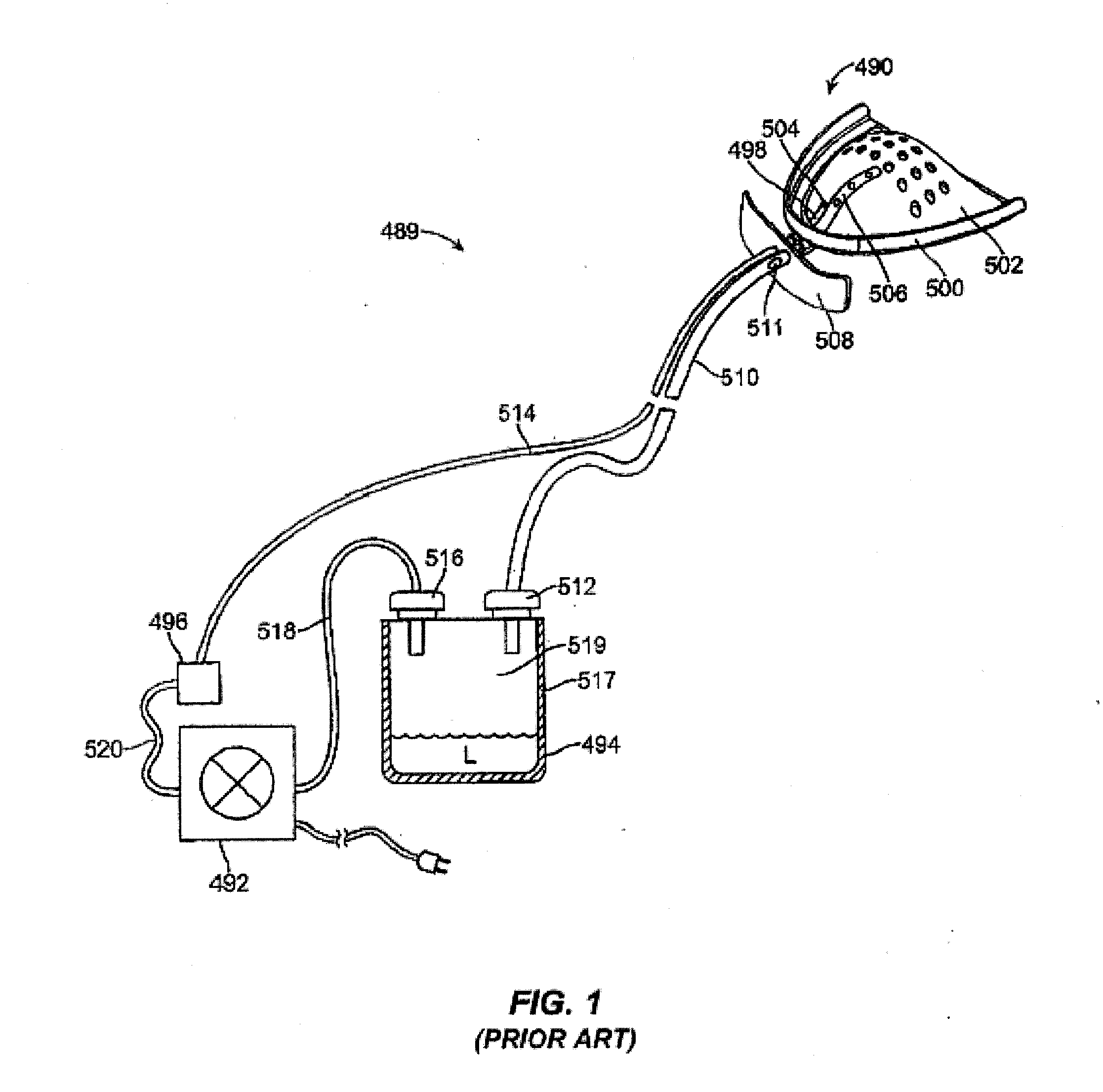Heating Element for Reducing Foaming During Saliva Collection
a heating element and saliva collection technology, applied in medical science, other nursing devices, other medical devices, etc., can solve the problems of simple barrier itself being fouled, risking saliva reaching the vacuum pump or other vacuum source, and operation of the vacuum system, so as to reduce or eliminate the formation
- Summary
- Abstract
- Description
- Claims
- Application Information
AI Technical Summary
Benefits of technology
Problems solved by technology
Method used
Image
Examples
Embodiment Construction
[0046]The saliva collectors and reservoirs of the present disclosure may be used in a variety of systems, typically systems where a vacuum line is being used to withdraw an air stream from a patient's oral cavity. Exemplary of such systems is system 489 illustrated in FIG. 1 where the reservoirs of the present invention might be used in place of conventional saliva reservoir 494.
[0047]Referring to FIG. 2, the apparatus and methods of the present disclosure provide for drawing an air stream from an oral cavity using a vacuum source, such as a pump. The air stream first passes into a reservoir where a first volume 10 of saliva separates by gravity and falls to the reservoir bottom. The remaining air stream will typically have entrained bubbles and saliva foam which is to be removed before the air stream reaches a saliva membrane to remove entrained liquid saliva. The removal of the bubbles and foam is accomplished with a bubble barrier to produce a pre-treated air stream which is then...
PUM
 Login to View More
Login to View More Abstract
Description
Claims
Application Information
 Login to View More
Login to View More - R&D
- Intellectual Property
- Life Sciences
- Materials
- Tech Scout
- Unparalleled Data Quality
- Higher Quality Content
- 60% Fewer Hallucinations
Browse by: Latest US Patents, China's latest patents, Technical Efficacy Thesaurus, Application Domain, Technology Topic, Popular Technical Reports.
© 2025 PatSnap. All rights reserved.Legal|Privacy policy|Modern Slavery Act Transparency Statement|Sitemap|About US| Contact US: help@patsnap.com



